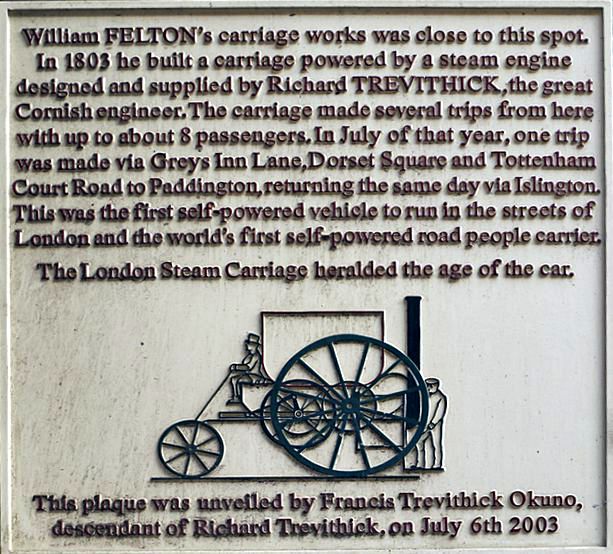William Felton (coachmaker) on:
[Wikipedia]
[Google]
[Amazon]
William Felton was a London coachmaker from 36 Leather Lane in

Volume IVolume II
Holborn
Holborn ( or ), an area in central London, covers the south-eastern part of the London Borough of Camden and a part (St Andrew Holborn (parish), St Andrew Holborn Below the Bars) of the Wards of the City of London, Ward of Farringdon Without i ...
, and 254 Oxford Street
Oxford Street is a major road in the City of Westminster in the West End of London, running between Marble Arch and Tottenham Court Road via Oxford Circus. It marks the notional boundary between the areas of Fitzrovia and Marylebone to t ...
near Grosvenor Square
Grosvenor Square ( ) is a large garden square in the Mayfair district of Westminster, Greater London. It is the centrepiece of the Mayfair property of the Duke of Westminster, and takes its name from the duke's surname "Grosvenor". It was deve ...
, and noted for his 1796 illustrated two-volume book, ''A Treatise on Carriages; comprehending Coaches, Chariots, Phaetons, Curricles, Gigs, Whiskies, &c Together with their Proper Harness in which the Fair Prices of Every Article are Accurately Stated.''
In the introduction, Felton wrote that he had no literary pretensions, but rather that his aim was to produce an authoritative guide to the construction, maintenance and repair of horse-drawn coaches. The ''Monthly Review'' agreed that it was not a literary masterpiece, but praised it for its encyclopaedic treatment of the subject. ''The Sporting Magazine
''The Sporting Magazine'' (1792–1870) was the first English sporting periodical to devote itself to every type of sport.
Its subtitle was "Monthly Calendar of the Transactions of the Turf, the Chase and Every Other Diversion Interesting to the ...
'' in its sixth issue was equally complimentary about Felton's ''Treatise''.
In the 1806 publication "''A List of Bankrupts with their Dividends and Certificates, &c. &c. for the last Twenty Years and Six Months from January 1, 1786 to June 24, 1806 inclusive''", William Felton's name is entered on 3 December 1803. The 1823 edition of "''Kent's Original London Directory''" lists W. J. Felton of 6 Long Acre Street as being a coachmaker.
Steam-powered carriage
Richard Trevithick
Richard Trevithick (13 April 1771 – 22 April 1833) was a British inventor and mining engineer. The son of a mining captain, and born in the mining heartland of Cornwall, Trevithick was immersed in mining and engineering from an early age. He ...
's 1803 London Steam Carriage
The London Steam Carriage was an early steam-powered road vehicle constructed by Richard Trevithick in 1803 and the world's first self-propelled passenger-carrying vehicle. Cugnot had built a steam vehicle 30 years previously, but that had been ...
was the first steam-powered vehicle designed for transporting passengers around London but it was never a commercial success. The carriage was carried by ship from Falmouth to London and arrived at Felton’s carriage works in Leather Lane in April 1803. Felton constructed the body, designed to accommodate eight people. The driver steered the front wheel using a tiller, with the engineman on a low step behind the coach. In July 1803, it was driven for some ten miles to Paddington
Paddington is an area in the City of Westminster, in central London, England. A medieval parish then a metropolitan borough of the County of London, it was integrated with Westminster and Greater London in 1965. Paddington station, designed b ...
, then back through Islington
Islington ( ) is an inner-city area of north London, England, within the wider London Borough of Islington. It is a mainly residential district of Inner London, extending from Islington's #Islington High Street, High Street to Highbury Fields ...
with 8 passengers, and as a precaution, streets were closed to other vehicles. On one of the vehicle's test runs it tore down 7 yards of garden railing, causing London's first motor accident.
In the 1980s a full-size replica of the London steam carriage was constructed. It was driven on the streets of Camborne
Camborne (from Cornish language, Cornish ''Cambron'', "crooked hill") is a town in Cornwall, England. The population at the 2011 Census was 20,845. The northern edge of the parish includes a section of the South West Coast Path, Hell's Mouth, C ...
on 28 April 2001, and in July 2003 retraced some of the original route between the Felton works in Leather Lane and St Cross Street.
A plaque marking the route was unveiled:

Bibliography
*Volume I
References
{{DEFAULTSORT:Felton (coachmaker), William Coachbuilders of the United Kingdom